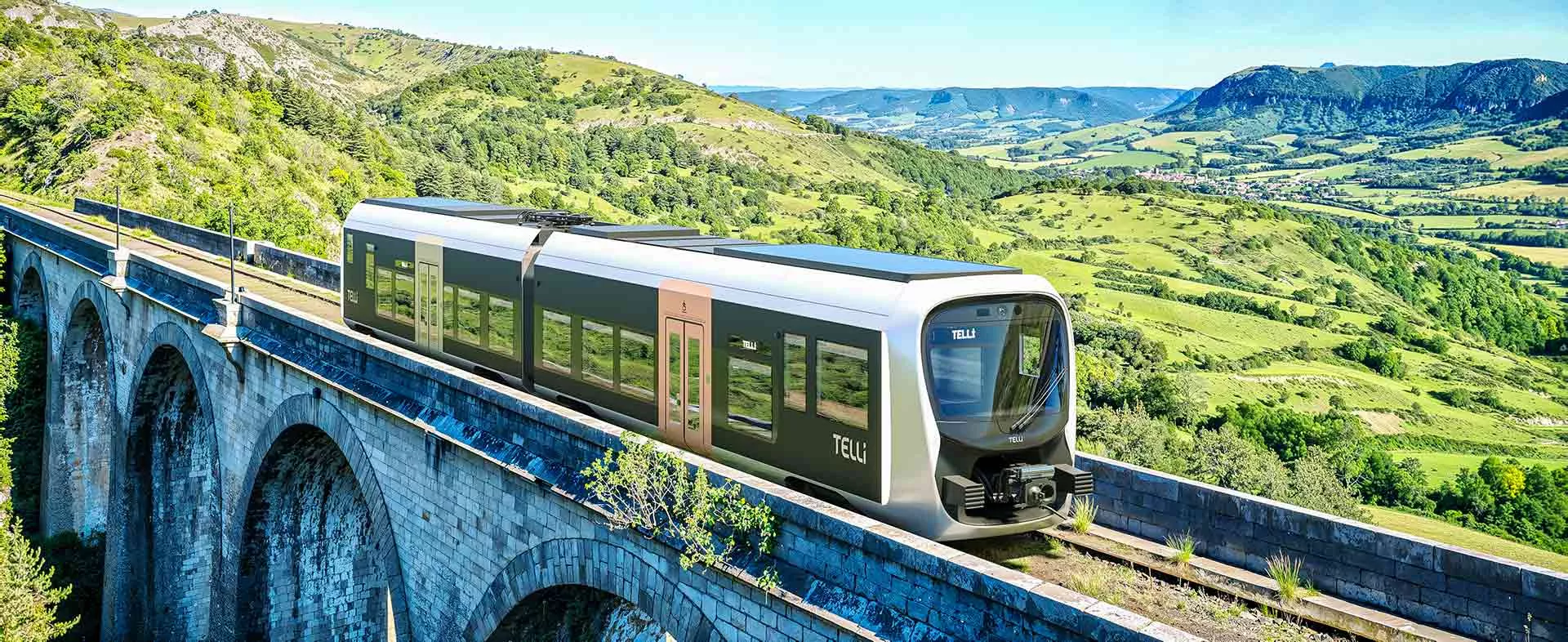
Meet TELLi—the ideal solution for small rural lines
TELLi is one of many innovations now being developed at SNCF to revive rural lines by cutting procurement and operating costs for France’s regions. In this interview, the project director tells us how.
All-terrain and eco-friendly
Lighter than a conventional regional train. Battery-powered. Made from recyclable materials. We’re developing TELLi to revitalize small local lines, with funding from France’s Agency for Ecological Transition (ADEME) as part of the France 2030 national investment plan.
An interview with the project director
What’s the aim of the TELLi project?
High-speed and regional trains connect cities and metropolitan areas, but they’re too big for the lines that reach into small communities—especially rural ones. It’s expensive to operate and maintain a conventional TER regional train, and the cost is often out of proportion to local needs. The big idea behind TELLi is to take a new approach—cutting overall costs by incorporating rolling stock, infrastructure and operations into a single system. Bottom line: TELLi will round out our TGV and TER offer and let us run more trains.
What’s the difference between TELLi and DRAISY?
They’re complementary—they meet different needs. With TELLi, we’re aiming for 70 seats. DRAISY will offer 30 seats for lightly trafficked lines. And TELLi is interoperable. Because it can interact with the railway signalling system, TELLi will pass through level crossings without slowing down, and call at major stations on the main network using the same lines as other types of train. DRAISY will operate more like a tram, running on dedicated lines less than 100 km long.
What innovations go into TELLi?
It’s a battery-powered train with a range of 200 km. French regions want to eliminate diesel trains by 2030, and that has shaped our thinking. TELLi will also be made from materials that are both recycled and recyclable.
What other advantages does it have?
Because it weighs only 40 tonnes, it’s lighter than a conventional TER and takes less of a toll on tracks. And that means less maintenance. We’re also working on TELLi’s suspension system. We want to design a solution that avoids pounding the rails and absorbs the impact of track defects to keep passengers comfortable. It’s an “all-terrain train”, minus the pollution of a 4x4.
Will TELLi run on hydrogen?
Hydrogen isn’t our priority solution, and our first demonstrator1 won’t use it. But later on, it’s entirely possible for the train’s batteries to switch from catenary power to hydrogen. All we’ll need to do is install a fuel cell and add specialized tanks.
How will TELLi be different for drivers?
The driver will be seated in a raised cab in the middle of the train. That saves space inside and makes it easier for TELLi to turn around. Drivers simply rotate their seat and head off in the opposite direction. The cab will also be digital, with screens and sensors to support drivers and make their job easier.
What will TELLi be like on the inside?
The interior space will be configurable, so it can carry not only passengers, but skis, bikes and micro-freight in storage bins. The space can even be reconfigured in the course of a single day. Imagine a train that carries schoolchildren in the morning, bikes at noon, and schoolchildren again at the end of the day. And thanks to its suspension system, TELLi can adapt to different platform heights, so it’s easier to access for passengers with disabilities. We’ve designed flexibility into the system to meet needs that vary from region to region.
How do you work with French regions?
We’re fortunate to be working with the Nouvelle-Aquitaine region, which acts as our ambassador to the other regions. Other partners include Cerema, the Centre for Studies on Risks, the Environment, Mobility and Regional Planning2. It’s Cerema’s job to show how TELLi meets regional needs.
What are your next steps?
We need to show that all the technologies work by the end of 2024. We’ll validate that stage of the project by making a scale 1 model showing all or part of the train, with demonstrators for the subsystems. Then we’ll do tests on a “laboratory” line in 2025, followed by scale-up and certification. We plan to put TELLi on the market in 2029.
Who else is taking part?
Our Group has rallied top players in French rail around a shared belief—that innovation is the key to revitalizing small rural lines. We’ve built a consortium of 11 members with complementary roles, from major industrial groups to more specialized SMEs.
What about the public sector?
We’ve also brought in public sector expertise. The challenge is aligning our corporate visions to produce cutting-edge technologies at a very competitive cost. It’s an incredible adventure, serving a vital goal for community life and the green transition.